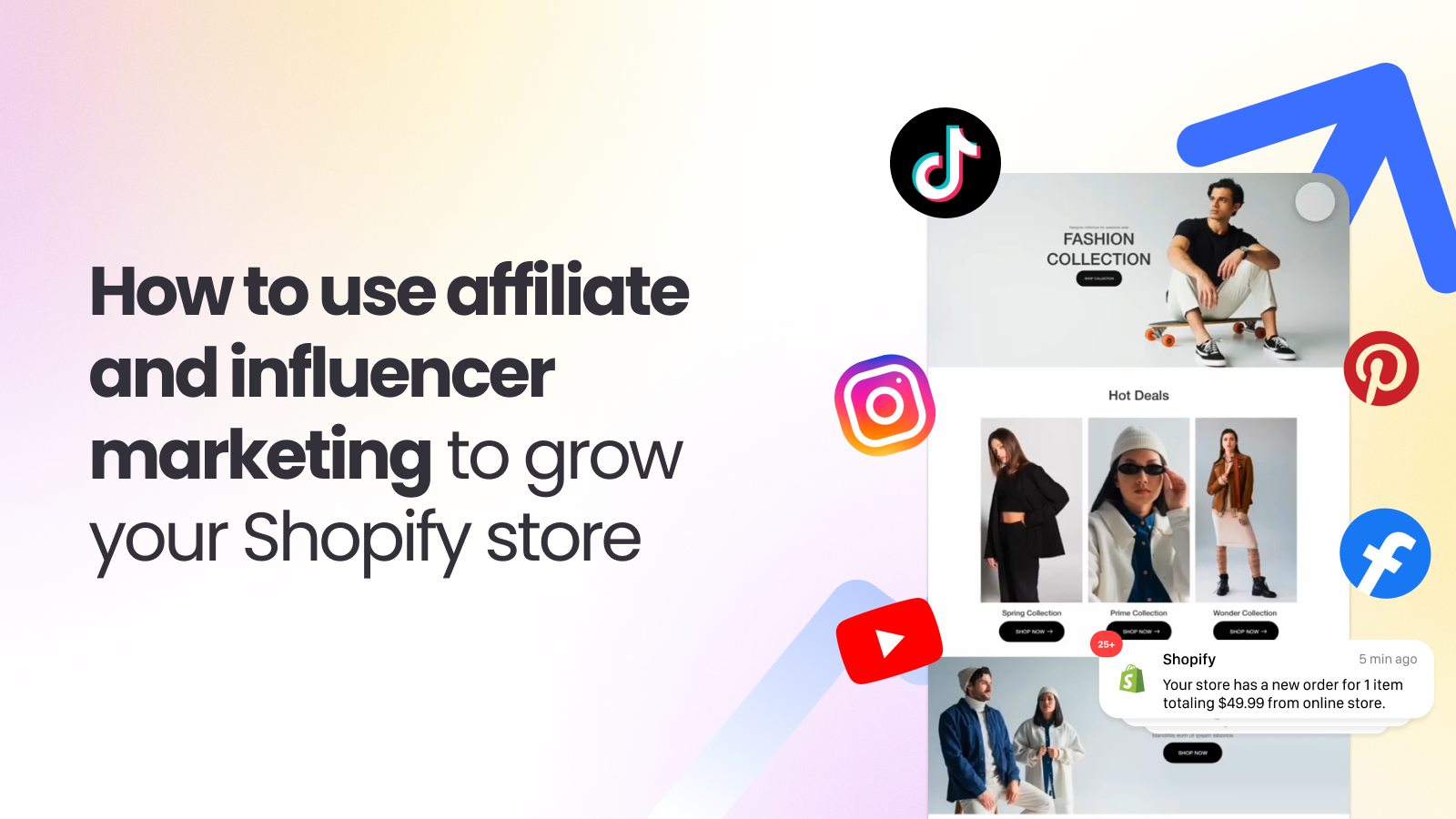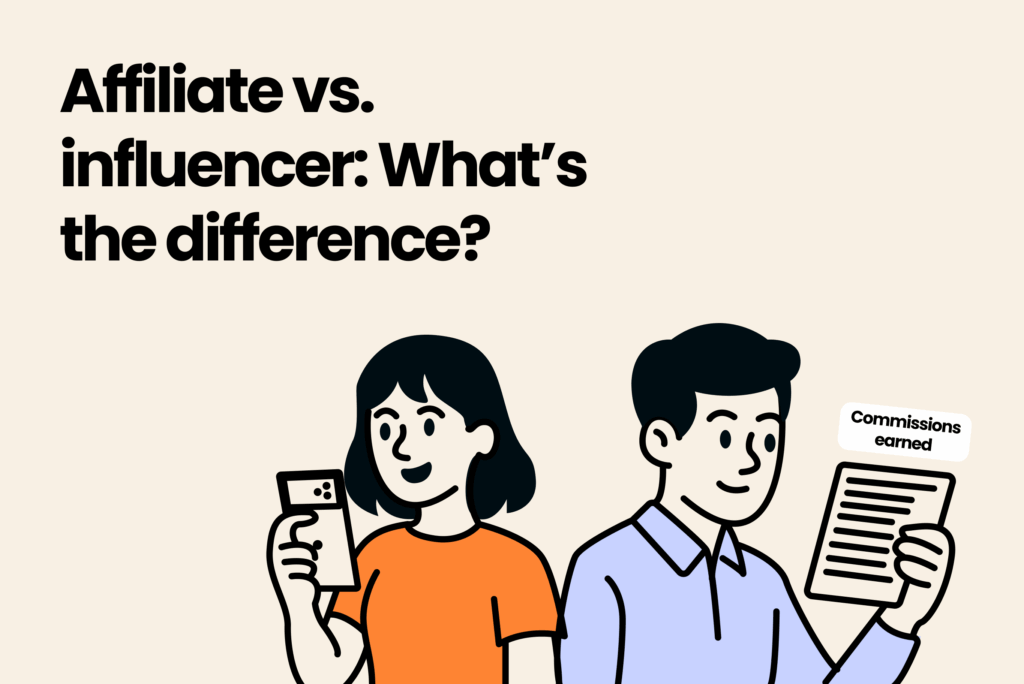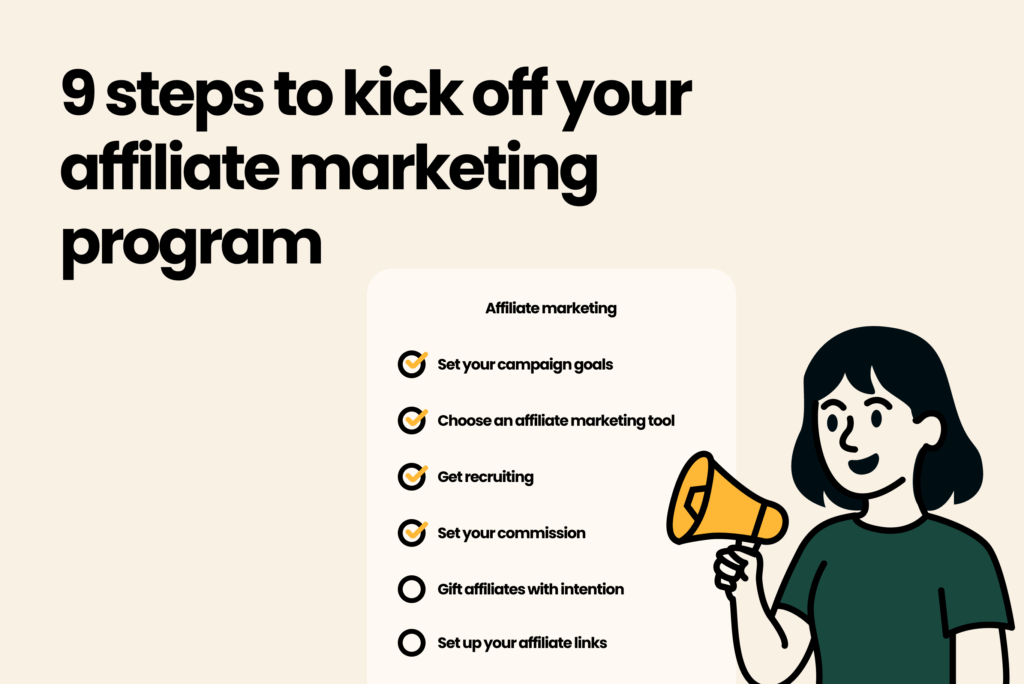
These days, when it comes to promoting your Shopify store, paid ads will only get you so far. That’s why many Shopify stores are using influencer and affiliate marketing to cut through the noise.
But what exactly does that entail? Here’s what influencer marketing is, how to start your affiliate marketing program, and how to know an affiliate strategy is right for your Shopify store.
An affiliate marketing program involves businesses partnering with influencers or affiliates who promote their products. When the affiliate successfully generates a sale for the business through their affiliate link, they earn a small commission.
This process is tracked through affiliate software, which generates unique links with cookie durations to determine how long a customer has to purchase through the link and have it attributed to the influencer.
This strategy is cost-effective. The data shows that people like to shop and purchase based on recommendations from people they trust. That influencer-audience connection goes a long way and successfully generates sales for businesses and income for themselves. No need for businesses to invest heavily up front. The payments go out only when the sales come in.

Great question!
An influencer or creator is someone who has a presence on a social media platform, whether it be YouTube, Instagram, TikTok, or something else. Once they partner with a brand to sell products or services on their behalf, that’s when they become affiliates.
Some influencers are also affiliates, and some affiliates are solely affiliates, hustling to sell for brands without necessarily having a huge audience or following.

Before you start anything, you need to set some goals. These goals should measure what success looks like, using key performance indicators (KPIs) to track your progress. The main KPIs to start measuring your campaign include ROI, conversion rate, and order value.
When it comes to measuring specific quantifiable goals, you should benchmark against your industry competitors. Each metric could vary widely depending on the product, the consumer, and the industry.
The right affiliate marketing software will help you set up automatic payouts, track performance on an intuitive dashboard, and manage your affiliates, all in one place.
The best part? Intuitive affiliate marketing programs don’t need to break the bank or be challenging to implement and learn. Opt for a software that supports your needs and scales.
There are seemingly endless ways to recruit your first affiliates. Start small, and really research which creators reflect your values and have audiences similar to your ICP. From there, try:
Commission rates for affiliates can range between 5% and 35%. Setting your commission rate is a delicate balance between your profit margin and your offering, ensuring your affiliates feel motivated to sell for you. Most often, the commission rate also depends on the experience and size of the affiliate’s audience.
Before your affiliates can sell for you, they need to be gifted some product or a credit for your services. When deciding what to gift out, present the affiliate with a few options. That way, they will be able to pick the items they’re most excited about. The more they can sell from a place of passion, the more sales they will generate.
You could also simply gift the influencer $100 to spend in your store or offer 95% off any product, allowing them to shop around without restriction.
Once your shiny new affiliates have tested your products, you can make your affiliate links for the items they’d like to promote. If you’re offering them commission on your entire storefront, you can create a link for the whole store. These links will attribute sales to each creator, so you need to make a unique link for each one.
Maintain branding consistency by using a consistent link structure. Something short and simple will also make it easier for affiliates to remember.
So you’ve set your commission rates with your affiliates. That’s great! But their motivation will go further if you occasionally incentivize them with additional promotions. Examples could include:
It’s easy for affiliates to get tired of the grind, so lighting a fire with a new promotion might help them get their heads back in the game.
Your campaign is running, and your affiliates are posting. Now what?
It’s important to remember your affiliates are your partners at the end of the day. Check in with them and ask them if they need anything. Establish recurring feedback loops. Make sure your affiliates feel heard and cared for. It looks good for your brand and ensures a partnership that stands the test of time.
Once your affiliate marketing program is up and running, it’s time to monitor its performance. Remember the goals you set in step one? Review whether or not you’re reaching them, and determine what’s working and what isn’t.
Check in with your top performers, as well. What are their posting strategies that are gaining the most traction? Understand where your wins are, double down on them, and you’ll see your success start to scale.
The short answer is that affiliate marketing can benefit every Shopify store. But it’s particularly effective in a highly competitive industry. When customers compare similar products, having an influencer speak for one might be the deciding factor for thousands of people.
On the flip side, it may not be feasible for stores with smaller profit margins, as they can’t offer a desirable commission while turning a profit. In these cases, by working with customers to sell for you or with micro-influencers, you may get away with paying a smaller commission rate or offering affiliates discounts or free products.
At Simple Affiliate, we pride ourselves on making affiliate marketing, well, simple. We offer an intuitive dashboard, KPI tracking, and even automated payouts and tax forms.
Managing and scaling your affiliate program doesn’t have to be complex. Book your demo with the Simple Affiliate team today.